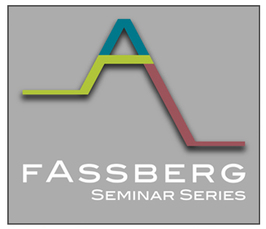Fassberg Seminar - Special Date!: How to make microtubules and build the cytoskeleton
Fassberg Seminar - Special Date!
- Datum: 26.08.2019
- Uhrzeit: 11:00 - 12:00
- Vortragende(r): Prof. Dr. Sabine Petry
- Department of Molecular Biology, Associated Faculty Member in the Departments of Chemical & Biological Engineering and Chemistry, Princeton University
- Ort: Max-Planck-Institut für biophysikalische Chemie (MPIBPC)
- Raum: Ludwig Prandtl Hall
- Gastgeber: Marina Rodnina
- Kontakt: helena.miletic@mpibpc.mpg.de

The mission of my lab is to understand how cells obtain their shape, position organelles, move materials, and segregate chromosomes during cell division. Each of these functions relies on a specific architecture of the microtubule (MT) cytoskeleton. Despite the central biological role of the MT cytoskeleton, it is not well understood how such a particular MT architecture is established in a cell. Moreover, we still lack a basic understanding of how a cell makes microtubules in the first place, although their building block tubulin was discovered in the 1960s.
In order to address these complex questions, my lab studies how the MT cytoskeleton is built, and pursues this subject by combining elements of cell biology, biochemistry, biophysics, structural biology and engineering. My lab’s major achievements are the following: We recently solved a long-standing mystery of how microtubules are nucleated in cells by identifying a novel MT nucleation factor which is part of the universal nucleation module. Next, we uncovered how this MT nucleation module gets to the right location and is turned on at the right time to give rise to a cellular MT network. By reconstituting this MT nucleation pathway in vitro and determining its building plan, we can explain branching MT nucleation from the molecular level to its resulting 3D architecture, which is critical for spindle assembly and chromosome segregation.
By studying how the MT cytoskeleton is built, I hope to help explain how hundreds of proteins can self-assemble on the nm scale into a complex molecular machine 1000-fold larger than its constituents. This will contribute to our understanding of the principles of biochemical self-assembly, a challenge for the biochemistry of the 21st century.
In order to address these complex questions, my lab studies how the MT cytoskeleton is built, and pursues this subject by combining elements of cell biology, biochemistry, biophysics, structural biology and engineering. My lab’s major achievements are the following: We recently solved a long-standing mystery of how microtubules are nucleated in cells by identifying a novel MT nucleation factor which is part of the universal nucleation module. Next, we uncovered how this MT nucleation module gets to the right location and is turned on at the right time to give rise to a cellular MT network. By reconstituting this MT nucleation pathway in vitro and determining its building plan, we can explain branching MT nucleation from the molecular level to its resulting 3D architecture, which is critical for spindle assembly and chromosome segregation.
By studying how the MT cytoskeleton is built, I hope to help explain how hundreds of proteins can self-assemble on the nm scale into a complex molecular machine 1000-fold larger than its constituents. This will contribute to our understanding of the principles of biochemical self-assembly, a challenge for the biochemistry of the 21st century.